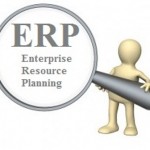Tips to Successful ERP Implementation Planning
 During the recession, many attempts to plan and follow an ERP implementation strategy have been put on hold. Today we’re getting out of the recession, and developing a successful ERP implementation planning strategy becomes one of the prioritized management activities in many business companies.
During the recession, many attempts to plan and follow an ERP implementation strategy have been put on hold. Today we’re getting out of the recession, and developing a successful ERP implementation planning strategy becomes one of the prioritized management activities in many business companies.
For business, it’s time to forget about previous failures and start looking into the future by planning new phases of the ERP implementation life cycle. Companies must properly understand the need for running various projects and updating their enterprise-wide systems and resources because otherwise they’re likely to lose their competitive advantages and fail.
Therefore, gaining the right understanding on how to plan and manage a successful business strategy is vital. In this article we’ll talk about three key tips to managing an effective Enterprise Resource Planning (ERP) implementation strategy.
Although the need for using methods to upgrade and improve business processes is quite obvious, not all business companies are ready today to spend their money on planning strategies. Statistics shows that only 20% of companies can afford making investments in the implementation of enterprise resource planning systems. The rest companies can’t just upgrade their ERP systems because of various reasons among which high cost is the primary reason.
My experience tells about three secrets to make the ERP implementation cycle cost-effective. I call these secrets “tips.” Let’s view these tips and find out how to drive the implementation process.
Tip #1. Select the Core Team
Because planning for a successful strategy is one of the primary business management activities, you should involve your best people in this activity. While it seems a dilemma to re-allocate your best staff members to a new project and leave other business processes without proper “treatment”, you need to understand the importance of such a step because by addressing business needs of your company you’re likely to solve other business issues in the long run. The best companies use cross-training methods to teach staff and organize teamwork.
You can also use ongoing staff training to let team leaders and team members work together and share the projects. But remember there’s no feasible way to simultaneously run the business and focus on the strategy for planning. That’s why you must assign your core team that will focus on taking the steps.
Tip #2. Focus the Team on Right Processes
One of the largest failures made by business companies trying to implement an ERP project refers to lack of focus on the primary processes. You can avoid this mistake if the core team will be guided properly and a set of processes will be chosen and assigned to the team.
The focus should be placed on ways and methods to implement an ERP project and other parallel business processes. You must present the ERP team both expectations and exceptions and show the scope of your strategy. All this will help the team stay focused on the right direction.
Tip #3. Integrate Staff Training with Business Processes
This tip refers to one important statement: there’s nothing more important than providing not only staff training programs but also integrating the employee education process with daily duties and tasks of the employees. Otherwise, workday of the employees is likely to be ineffective in terms of business planning because their daily efforts aren’t integrate with the strategic initiative for planning.
The best way to ensure successful integration of training with the daily management is to run them in parallel. Although this can be expensive and complex, the integration will deliver full compensation in the long run. To make the integration you’ll need to use ERP implementation software that could help you unify business processes and training into a single business management system.
Although following an ERP implementation strategy can help a business achieve better results, it can also be destructive and ruinous to the business if not successful. You shouldn’t make haste when taking decisions reading the strategies. I hope the listed tips will help you run an effective decision making process and manage a successful ERP implementation strategy.














